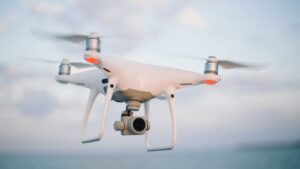AML Technologies thinks private markets can help fund its global 3D expansion strategy

Getty Images.
AML Technologies is a 3D parts manufacturer that has plans to scale up.
It specialises in a process called Wire Additive Manufacturing (WAM) — a form of 3D printing that combines welding, robotics, metallurgy and software.
The Adelaide-based company says its WAM product can be utilised across the major industrial sectors, including resources, aerospace, defence and shipping.
And over the medium-term, it wants to maximise opportunities in the major commercial shipping routes through Singapore and Hong Kong.
Capital injection
To expand its operations, AML has received provisional approval to list on the ASX.
But before it joins the boards it’s looking to the private markets for capital, with the issuance of a $750,000 convertible loan facility to sophisticated investors.
Founder and CEO Andy Sales says the funds will be used for purchasing long-lead equipment used to set up a facility in Singapore.
“Like any growing business, you need that working capital to keep things moving,” he told Stockhead.
“We’re looking at employing people long-term in Singapore, then bringing them to Adelaide to train.”
The company currently has a four-unit production cell in Singapore, with plans to expand that to eight.
“And that’s mainly due to demand that we’re seeing in the Singapore marine hub.”
Accreditation is key
AML isn’t the first Australian company to develop a product using cutting-edge 3D printing technology.
But Mr Sales says it’s the only one that holds a product accreditation with Lloyd’s Register, which provides quality assurance services for the global shipping industry.
In fact, AML is the only company in the world that holds a specific 3D metal printing accreditation for Wire Feedstock.
“It’s an intensive testing procedure that involves how we take a drawing, how we deal with customers, right down into how we manage our mechanical process,” Mr Sales explained.
The company spent around 10 months making sure all of its procedures were adequately in place, and received the accreditation in July last year. And Mr Sales said its been good for business.
“For one thing, if a marine customer wants to have a part built, that part has to meet the safety standards that apply to its own industry. So they need to use a certified supplier,” he said.
In addition, “after the certification, Lloyd’s introduced us to four companies. Three of them engaged us and we’ve already done a job for one of them — so we’re already showing evidence of actual revenue.”
The company is in the process of completing its ASX prospectus, where it hopes to raise $5 million.
Around 85 per cent of that amount will go towards funding working capital requirements and buying new equipment.
Mr Sales says that at the macro level, the total commercial value of the global shipping industry numbers into the trillions of dollars.
“But at the micro level, there’s still plenty of ships, new assets and structures that need repair. The overall dollar value is smaller but it’s still a number with plenty of zeros behind it, and that’s a niche we think our technology can fit right into.”
UNLOCK INSIGHTS
Discover the untold stories of emerging ASX stocks.
Daily news and expert analysis, it's free to subscribe.
By proceeding, you confirm you understand that we handle personal information in accordance with our Privacy Policy.








